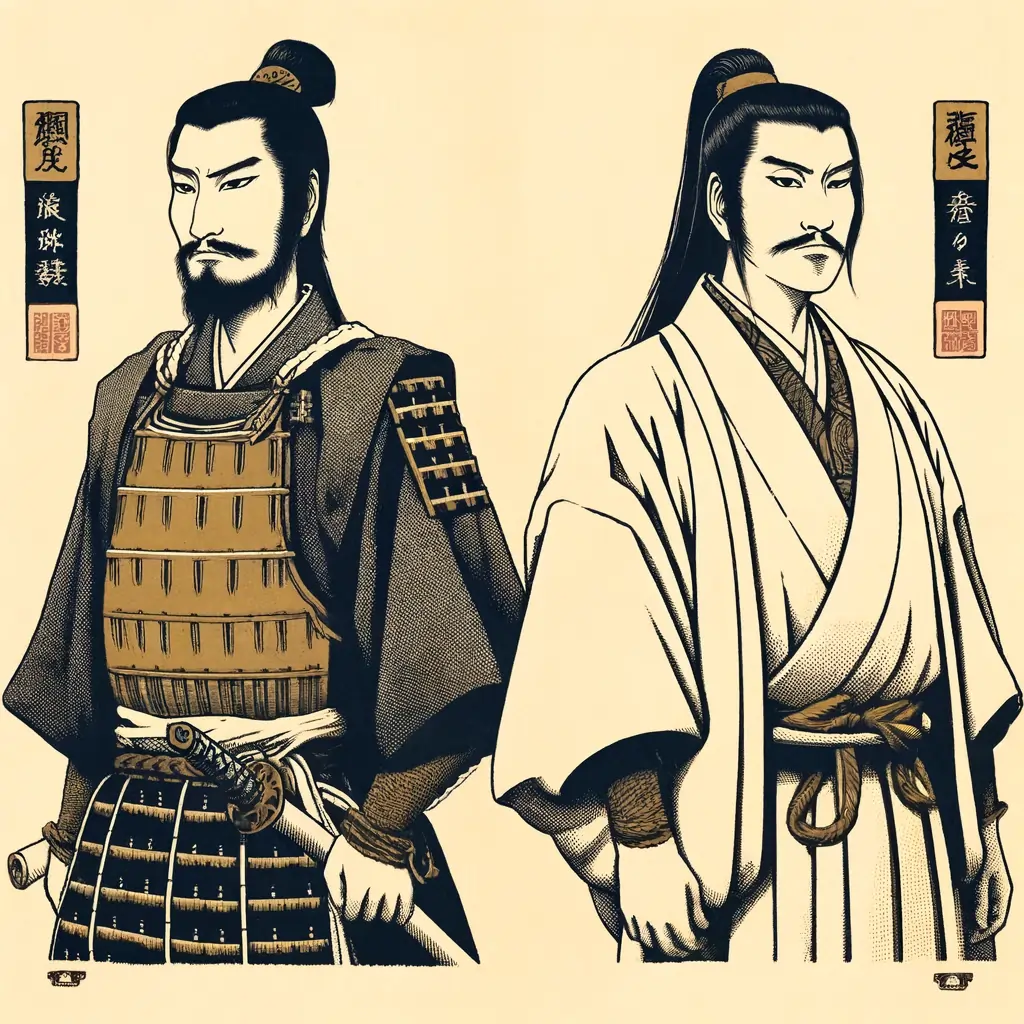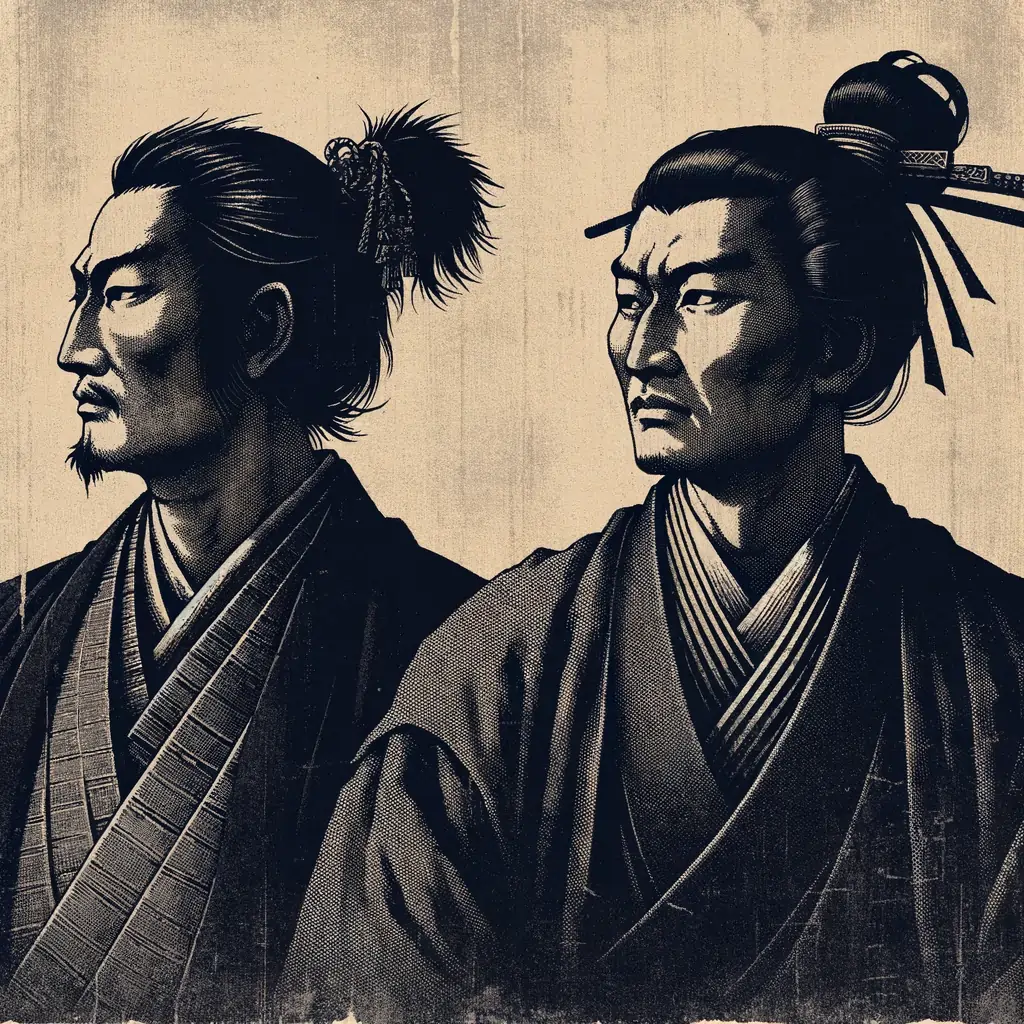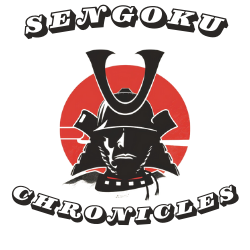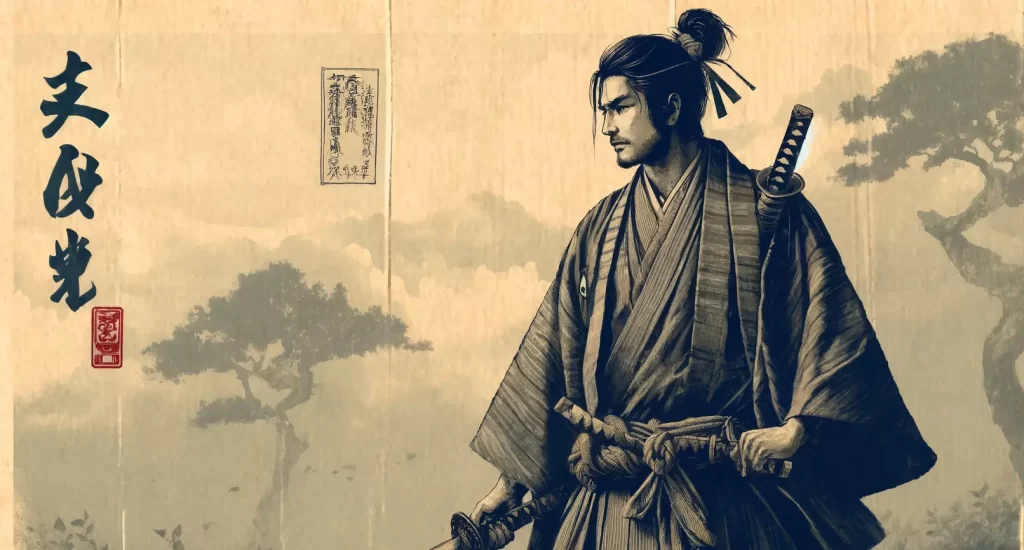Introduction
James Clavell’s novel “Shogun,” set in the early 17th century, is a captivating exploration of feudal Japan through the eyes of an English navigator who finds himself shipwrecked on its shores. This best-selling work is not only a gripping narrative but also a significant cultural artifact, illustrating Western perceptions of Japanese history and society during a time of fierce samurai warriors and intricate political intrigue. At the heart of this narrative is the character Kashigi Yabushige, a powerful daimyo whose ruthless ambition and cunning diplomacy are pivotal to the story’s unfolding.
Kashigi Yabushige, though a fictional creation, is said to be loosely based on the historical figure Oda Nobunaga—a name synonymous with the unification of Japan during the tumultuous Sengoku period. Nobunaga, known for his innovative military strategies and unrelenting brutality in pursuit of power, is a complex figure in Japanese history. His depiction through Yabushige’s character offers a fascinating lens into how historical figures are adapted and reimagined in literary forms.
This blog post aims to dissect the key differences between the historical Oda Nobunaga and his fictional counterpart in “Shogun,” Kashigi Yabushige. By comparing these two figures, we can uncover not only the artistic liberties taken by Clavell but also how these choices reflect broader Western narratives about Japan’s past. This analysis will delve into the nuances of each character’s leadership style, personality, and the symbolic roles they play within their respective narratives, providing insights into the intersection of historical accuracy and creative storytelling.
Section 1: Historical Context and Background
Oda Nobunaga
Oda Nobunaga (1534-1582) was a prominent daimyo during Japan’s Sengoku period, a time marked by social upheaval, political intrigue, and near-constant military conflict. Nobunaga was not just a ruler but a revolutionary, whose ambitious efforts to consolidate power under his rule were instrumental in setting the stage for the eventual unification of Japan. His innovative tactics, which included the use of firearms on the battlefield, a rarity in Japan at the time, and his strategic alliances, underscored a new era of Japanese warfare and politics.
Nobunaga’s rise to power began in earnest when he defeated a rival clan to take control of Nagoya Castle in 1555, and his influence expanded rapidly from there. By 1560, he had secured a significant victory at the Battle of Okehazama, where he defeated a much larger force through surprise and tactical superiority. His approach to rule was both ruthless and pragmatic, often employing brutal methods to achieve his ends, including the infamous incident at Mount Hiei, where he ordered the massacre of thousands to quell potential opposition.
Kashigi Yabushige
In contrast, Kashigi Yabushige is a fictional character in James Clavell’s “Shogun,” serving as one of the many powerful lords vying for control and influence in a similarly tumultuous period in Japan. While Clavell’s narrative does not correspond point-for-point with specific historical events, Yabushige embodies the archetypal Sengoku daimyo—ambitious, cunning, and merciless. His role in the novel, interacting with other fictional and semi-historical characters, is designed to showcase the complexity of political alliances and the brutal nature of feudal leadership in Japan.
Yabushige’s character is crafted to reflect the broader thematic elements of the novel, such as the clash of cultures between the East and the West, and the intricate dance of diplomacy and warfare. His actions and decisions within the narrative provide a window into the strategic maneuverings typical of the period, albeit through a lens that is partly Westernized and dramatized for the sake of storytelling.
Comparing Historical and Fictional Realities
The distinction between the historical Oda Nobunaga and the fictional Kashigi Yabushige lies not only in their specific deeds and personalities but also in their representational purpose. Nobunaga, a real historical figure, is studied for his impact on Japanese history, reflecting the complexities of a nation on the brink of unification. Yabushige, on the other hand, serves as a narrative tool in “Shogun,” shaped to explore thematic concerns and to heighten the dramatic tension of the novel.
This section has set the stage for understanding how each character—Nobunaga and Yabushige—operates within their respective contexts, paving the way for a deeper examination of their differences in leadership, personality, and cultural portrayal in the following sections.
Section 2: Key Character Traits and Differences
In comparing Kashigi Yabushige and Oda Nobunaga, it’s crucial to explore the divergences in their character traits and leadership styles, which highlight the contrast between historical reality and fictional portrayal.

Leadership Style and Ambition
Oda Nobunaga: Nobunaga’s leadership was marked by boldness and innovation. His use of firearms, willingness to break from tradition, and strategic vision were ahead of his time. He sought to conquer and unify Japan under his rule, often using cruel but effective methods. His ambition was clear: to establish a lasting legacy by reforming Japan’s social and political structures.
Kashigi Yabushige: Yabushige, as crafted by Clavell, also displays great ambition and a cunning mind. However, his methods and motivations are tailored to fit the narrative needs of a Western novel. In “Shogun,” Yabushige’s actions and strategies are often depicted as responses to the foreign influences entering Japan, portraying a nuanced interaction between Eastern and Western tactical thought. His ambition is not just personal or national but also intercultural, representing a thematic exploration of power dynamics between conflicting civilizations.
Personality and Moral Compass
Oda Nobunaga: Historical accounts suggest that Nobunaga could be ruthless, even brutal, in pursuit of his goals. This aspect of his personality was not just feared but sometimes admired, as it was part of a broader strategy to instill order and loyalty. Nobunaga’s pragmatism often overshadowed his morality, viewing cruelty as a necessary tool in warfare and governance.
Kashigi Yabushige: In “Shogun,” Yabushige’s personality is more crafted to evoke a specific reaction from the reader, often aligning with Western moral and ethical standards. His decisions might still be ruthless, but they are usually framed within a context that either justifies or questions them through the eyes of other characters, particularly the Western protagonist. This narrative choice allows readers to explore moral ambiguities in a way that is relatable and dramatic.
Cultural and Political Insight
Oda Nobunaga: Nobunaga’s actions were deeply rooted in the socio-political context of Sengoku Japan, driven by the imperative to stabilize and centralize power. His approach to leadership and reform was influenced by both the demands of continual warfare and the need to manage a diverse and often rebellious population.
Kashigi Yabushige: The character of Yabushige offers insight into Japanese culture through a filtered lens, often emphasizing aspects that highlight differences or similarities to Western culture. His political maneuvers in the novel often serve to illustrate broader themes of cultural exchange, adaptation, and conflict, rather than solely aiming to achieve historical accuracy.
Section 3: Narrative Function and Symbolism
The depiction of Kashigi Yabushige in “Shogun” serves not just to drive the plot, but also as a means to explore deeper themes and provide a narrative bridge between Eastern and Western cultural perspectives. This section examines how Yabushige functions within the narrative and the symbolic roles he plays, contrasting with the historical significance of Oda Nobunaga.
Yabushige as a Narrative Construct
Narrative Role: Kashigi Yabushige is crafted by James Clavell as a complex character whose actions and decisions propel the story’s major conflicts and alliances. He is often at the center of power struggles and diplomatic negotiations, which are crucial for the plot development and for illustrating the strategic landscape of feudal Japan. His interactions with the protagonist, an English navigator, and other characters, provide a dynamic view of leadership and ethics in a culturally rich setting.
Purpose in Storytelling: Yabushige’s role extends beyond that of a mere antagonist or ally; he embodies the challenges of navigating leadership in a period marked by intense internal conflict and the beginning of external influences. Through him, Clavell addresses themes of adaptation, survival, and the clash of civilizations, making Yabushige a pivotal figure in the unfolding drama and cultural explorations in the novel.
Symbolism and Representation
Symbol of Western Interpretations: Yabushige often acts as a symbol for Western interpretations of Japanese feudal lords. His portrayal reflects a blend of admiration for his strategic genius and critique of his ruthless methods, typical of Western historical narratives that emphasize a dichotomy between civilized negotiation and barbaric warfare. This character construction allows Western readers to engage with a version of Japanese history that is both exotic and understandable from their cultural viewpoint.
Representation of Cultural Conflict: Through Yabushige, “Shogun” explores the tensions and potential for synthesis between differing worldviews. His interactions symbolize the broader cultural exchanges and misunderstandings that occur when Eastern and Western ideologies meet. He represents the Japanese response to foreign influence, embodying both resistance and curiosity, which are central themes in Clavell’s portrayal of cross-cultural encounters.
Section 4: Impact on Audiences
The portrayal of Kashigi Yabushige in “Shogun” and its deviations from the historical figure of Oda Nobunaga not only enhance narrative depth but also significantly influence audience perceptions and engagement. This section explores how these characterizations impact readers’ understanding of historical accuracy versus artistic license, and how they shape audience reception of the novel.

Historical Accuracy vs. Artistic License
Balancing Act: In historical fiction, writers often face the challenge of balancing historical accuracy with the need for compelling storytelling. James Clavell’s depiction of Kashigi Yabushige exemplifies this balance, as the character is rooted in the persona of Oda Nobunaga but adapted to suit the novel’s narrative and thematic needs. This blend allows for a richer, albeit fictionalized, exploration of Japanese feudal culture and politics, which can be more engaging for readers than a strict historical account.
Educational Impact: While some purists might critique the liberties taken with historical facts, these creative adjustments often make the historical settings and figures more accessible and intriguing to a broader audience. However, there is a risk that readers may accept fictional portrayals as historical truths, which underscores the importance of distinguishing between the artistic elements of the narrative and the actual historical record.
Audience Reception
Cultural Resonance: For Western audiences, “Shogun” serves as an introduction to Japanese history and culture, seen through the lens of an outsider similar to themselves. Kashigi Yabushige’s role and his interaction with Western characters facilitate a deeper engagement with the story, as they provide a point of comparison and contrast that highlights both the differences and the universality of human experiences across cultures.
Emotional and Intellectual Engagement: The character of Yabushige, with his complex motives and decisions, sparks discussions about leadership, morality, and cultural integrity. These discussions engage readers on an emotional level, encouraging them to empathize with characters from vastly different backgrounds and historical contexts. Intellectually, it prompts deeper consideration of the impacts of colonialism, cultural exchange, and the inevitable transformations that occur at the intersection of differing worlds.
Section 5: Conclusion
In examining the character of Kashigi Yabushige from James Clavell’s “Shogun” alongside the historical figure Oda Nobunaga, we gain valuable insights into how historical fiction interprets and reshapes real historical events and personalities for narrative purposes. This exploration reveals not only the artistic liberties taken by authors but also the implications of these choices for audience understanding and engagement.
Recap of Main Points
- Characterization and Leadership: While both Kashigi Yabushige and Oda Nobunaga share traits of ambitious and strategic leaders, their portrayals diverge significantly. Nobunaga’s historical actions and impact are rooted in the realities of Sengoku-period Japan, whereas Yabushige’s character serves the narrative and thematic requirements of Clavell’s novel, offering a lens through which Western audiences can explore Japanese history.
- Symbolism and Narrative Function: Yabushige’s role as a cultural intermediary helps to frame the East-West dichotomy, enriching the novel’s thematic exploration of power, culture, and identity. This contrasts with Nobunaga’s role as a unifier and innovator, whose real-life actions had direct and lasting impacts on the course of Japanese history.
- Audience Impact: The fictionalized depiction of Yabushige allows audiences to engage with complex themes of cultural exchange and conflict, sparking both emotional and intellectual responses that deepen their appreciation of historical fiction as a genre.
Importance of Understanding Fictionalization
Understanding the differences between the historical Nobunaga and the fictional Yabushige is crucial for readers wishing to fully appreciate the nuances of historical fiction. Recognizing the blend of fact and fiction enhances one’s ability to critically assess the historical accuracy of the content while appreciating the depth and creativity of the author’s vision.
Closing Thoughts
James Clavell’s “Shogun,” through characters like Kashigi Yabushige, offers more than just a captivating story; it provides a framework for exploring broader questions about history, culture, and the human experience. By engaging with both the historical and the fictional, readers gain a more comprehensive understanding of how narratives are constructed and the ways in which they reflect, distort, or clarify our perceptions of history.
Further Reading
- Historical Texts on Oda Nobunaga:
- Oda Nobunaga: The Battle for Japan by Hiroyuki Honda – A detailed biography that explores Nobunaga’s strategies and personality.
- Nobunaga’s Ambition: A series of articles or a book that discusses the strategic and cultural impacts of Nobunaga’s rule in Japan.
- Critiques and Analyses of “Shogun”:
- James Clavell’s Shogun and the Western Image of Japan by Valerie Henitiuk – Analyzing how “Shogun” has shaped Western perceptions of Japanese history and culture.
- Adapting History and Literature into Movies by John Tibbetts – Discussing how historical figures like Nobunaga are adapted into film and literature.

